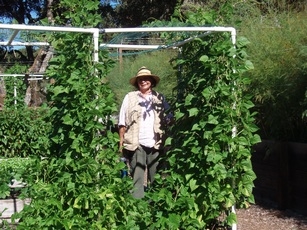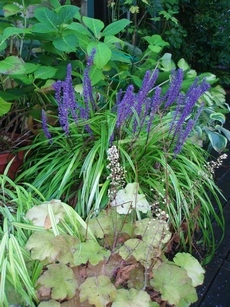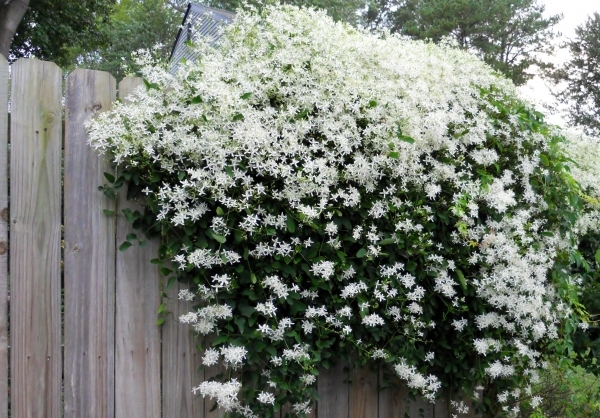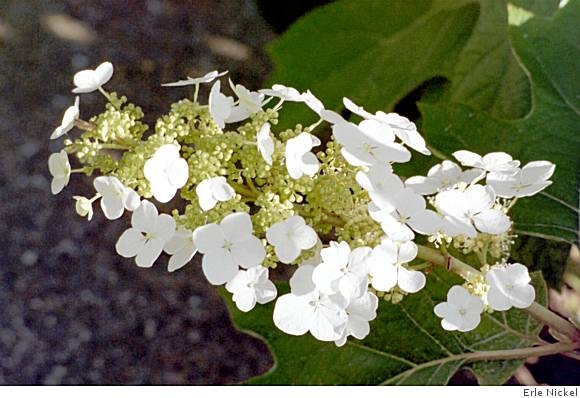My friend, Janie, shares some of the vegetables she gets in her weekly Community Supported Agriculture box with me. I like leafy greens while she devours the peppers, lettuces, potatoes, beans – whatever is in season and harvested fresh and delicious that week.
I’d heard about a fabulous place in the Ben Lomond hills, so called Linda Butler, the owner of Lindencroft Farm, to arrange a visit. I learned so much from Linda who took time out from running the farm to show me around.
Linda and her husband,
Linda has recently installed a couple of bee hives. She became interested in bees when native bees swarmed for 3 years in a row. She put up boxes one year hoping they would set up housekeeping on the farm, but they failed to come again. Undaunted she bought some bees and the hives are doing well. She doesn’t plan to harvest the honey, she just likes bees.
The Ben Lomond sandhills are an amazing ecosystem and the native plants have adapted to the pure white, fine sand. Vegetables, however, like rich soil to thrive. The Butlers solved this by building special raised beds. First they excavated 3 feet of the sandy soil, lined each bed with steel hardware cloth for gopher control and refilled them with a mix of organic compost, aged and composted horse manure and native soil.
Then they surrounded the beds with a redwood frame. From that point on, the beds are never tilled, compacted or otherwise disturbed by machines or feet. They are refreshed between crops with organic compost.
Asked why the beds are all so deep, Linda explained that she rotates crops regularly and wants to be able to plant deep rooted vegetables, like tomatoes, anywhere she wants. There are now 200 beds in production.
For the first couple of crops in a new bed, she grows leafy greens to establish beneficial microbes in the soil. Larger veggies come later and as she doesn’t till the soil, the microbes aren’t disturbed in any way. Liquid kelp and compost tea are also used for foliar feeding and soil drench. Fish bone meal, not fish meal, which is too high i nitrogen, is also applied to crops.
Starting with just a few play group moms, the farm now grows for two restaurants and harvests enough for a limited number of CSA boxes. A chef from one of the restaurants uses chicory, a bitter green braised and used under rich meats. Another chef makes sausages from grass fed beef and sweetens them with bronze fennel tops and young, fresh seed for flavoring. Those who subscribe to a weekly CSA box enjoy a different mix -lettuces, chard, cole crops, peppers, tomatoes herbs – to name just a few.
Next week in Part 2, I’ll talk about how Linda grows all this wonderful produce and which varieties are her favorites.

 Don’t prune now, you’ll be happy to hear. Fall is not a good time to prune. Wounds heal slowly, leaving them more susceptible to disease. As a general rule, don’t prune when leaves are falling or forming. Wait to prune most trees until late in the dormant season or in late spring after leaves and needles form. To avoid sap flow on birches and maples, prune after leaves mature.
Don’t prune now, you’ll be happy to hear. Fall is not a good time to prune. Wounds heal slowly, leaving them more susceptible to disease. As a general rule, don’t prune when leaves are falling or forming. Wait to prune most trees until late in the dormant season or in late spring after leaves and needles form. To avoid sap flow on birches and maples, prune after leaves mature.  up when the first drops started to fall. Everything looks brighter and more vivid now. I can even get a shovel in the earth to turn over the soil in those dry spots where I’d love to plant a new tree or shrub. The soil is still warm and will nurture new root growth. It’s a good time to plant a new fruit tree, edible shrub like a blueberry or maybe even something with beautiful fall color.
up when the first drops started to fall. Everything looks brighter and more vivid now. I can even get a shovel in the earth to turn over the soil in those dry spots where I’d love to plant a new tree or shrub. The soil is still warm and will nurture new root growth. It’s a good time to plant a new fruit tree, edible shrub like a blueberry or maybe even something with beautiful fall color.
 wet winters. After Glow is frost tolerant and looks to be painted with florescent paint. There are spectacular hybrids being developed every year. These are not as hardy as the traditional hens and chicks but well worth the effort to find a place where they can survive a freeze. Frilly Mauna Loa sports turquoise and burgundy foliage while echeveria Blue Curls looks like an anemone in a tide pool.
wet winters. After Glow is frost tolerant and looks to be painted with florescent paint. There are spectacular hybrids being developed every year. These are not as hardy as the traditional hens and chicks but well worth the effort to find a place where they can survive a freeze. Frilly Mauna Loa sports turquoise and burgundy foliage while echeveria Blue Curls looks like an anemone in a tide pool.  I love those huge, showy tulips as well as the new colors of daffodil and narcissus coming out each year. Can’t live without them. But I want to add to the show next spring. Maybe I’ll plant Spring Starflower or Ipheion. Their starry white flowers bloom over a long period in spring and they naturalize easily. Spring Snowflake ( leucojum vernum ) will also naturalize in the garden. The flowers are small and bell shaped, white with a green or yellow spot and have a slight fragrance. And I want to include some species tulips. They will rebloom year after year just like they do in the wild in Europe, North Africa and Asia.
I love those huge, showy tulips as well as the new colors of daffodil and narcissus coming out each year. Can’t live without them. But I want to add to the show next spring. Maybe I’ll plant Spring Starflower or Ipheion. Their starry white flowers bloom over a long period in spring and they naturalize easily. Spring Snowflake ( leucojum vernum ) will also naturalize in the garden. The flowers are small and bell shaped, white with a green or yellow spot and have a slight fragrance. And I want to include some species tulips. They will rebloom year after year just like they do in the wild in Europe, North Africa and Asia. Sweet Autumn Clematis ( clematis terniflora ) and your worries are over. They are a gorgeous sight now covered in pure white, lightly fragrant flowers. Later in the fall the vine will become a silvery mass of fluffy seed heads. This small-flowered species looks impressive covering an upscale arbor or even embellishing a plain fence of garden shed. It blooms on new growth so you can easily keep it in check by cutting stems back to 12" in the spring. It will bloom well in partial shade, too.
Sweet Autumn Clematis ( clematis terniflora ) and your worries are over. They are a gorgeous sight now covered in pure white, lightly fragrant flowers. Later in the fall the vine will become a silvery mass of fluffy seed heads. This small-flowered species looks impressive covering an upscale arbor or even embellishing a plain fence of garden shed. It blooms on new growth so you can easily keep it in check by cutting stems back to 12" in the spring. It will bloom well in partial shade, too.  eir huge, whitish-pink conical flowers turn a papery soft tan color. In later autumn, the leaves will take on striking shades of crimson and bronze-purple, and through winter the dry flowers persist above the branches lined with exfoliating copper-brown, cinnamon and tan bark. Oakleaf hydrangeas are fast growing and accept full sun or partial shade in rich evenly moist soil. They’re real lookers in the garden.
eir huge, whitish-pink conical flowers turn a papery soft tan color. In later autumn, the leaves will take on striking shades of crimson and bronze-purple, and through winter the dry flowers persist above the branches lined with exfoliating copper-brown, cinnamon and tan bark. Oakleaf hydrangeas are fast growing and accept full sun or partial shade in rich evenly moist soil. They’re real lookers in the garden.